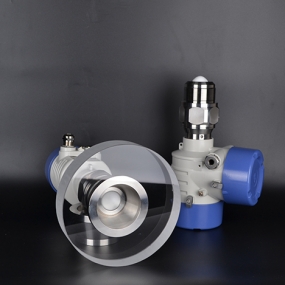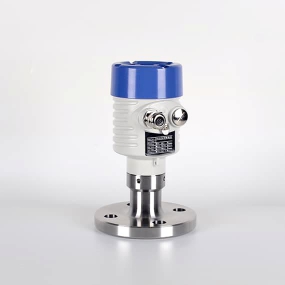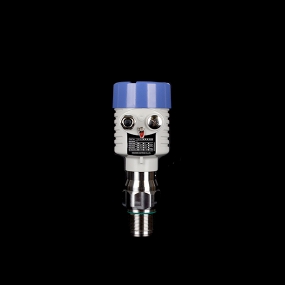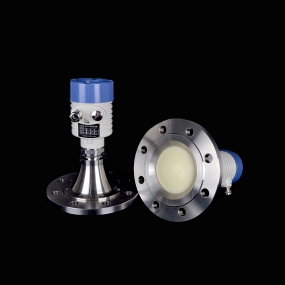Description
Process radar level transmitters operate at microwave frequencies between 24GHz and about 120GHz. Manufacturers have chosen frequencies for different reasons ranging from licensing considerations, availability of microwave components and perceived technical advantages.
There are arguments extolling the virtues of high frequency radar, low frequency radar or every frequency radar in between. In reality, no single frequency is ideally suited for all of the radar level measurement applications.
If we compare 26GHz radar with 80GHz/120GHz radar, we can see the relevant benefits of high frequency and low frequency radar:
■ Antenna size - beam angle
The higher the frequency of a radar level transmitter, the more focused the beam angle for the equivalent size antenna.
With lens antennas, this allows smaller nozzles to be used with a more focused beam angle.
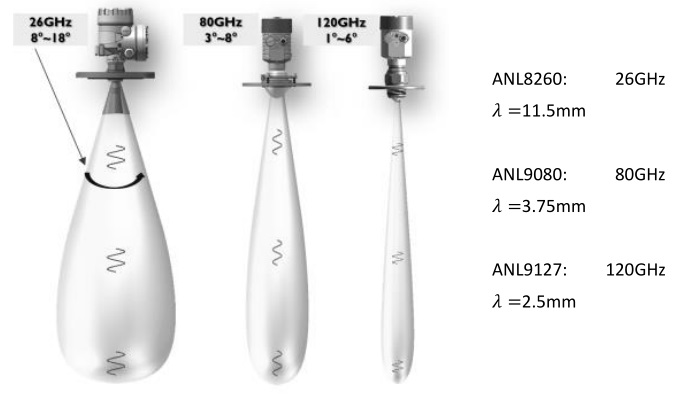
For example, a G1-½" (40mm) lens antenna radar at 80 GHz has approximately the same beam angle as a4" (100 mm) horn antenna at 26 GHz.
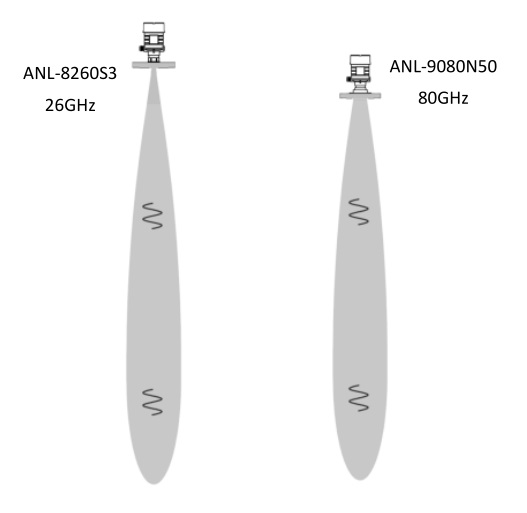
However, this is not the complete picture. Antenna gain is dependent on the square of the diameter of the antenna as well as being inversely proportional to the square of the wavelength. Antenna gain is proportional to:
Diemater 2 /wavelength 2
Antenna gain also depends on the aperture efficiency of the antenna. Therefore, the beam angle of a small lens antenna at a high frequency is not necessarily as efficient as the equivalent beam angle of a larger, lower frequency radar. A 4" horn antenna radar at 26 GHz gives excellent beam focusing.
For a full description of antenna gain and beam angle at different frequencies, please read 'cSIMBA's Application Note on Radar Antennas'.
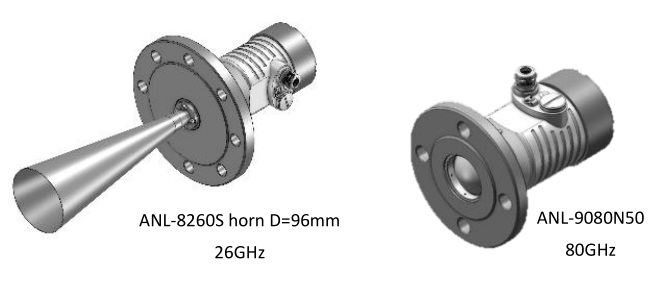
■ Antenna focusing and false echoes
An 80GHz beam angle is more focused but, in some ways, it has to be. The wavelength of an 80GHz radar is only 3.75mm compared with a wavelength of 11.5mm for a 26GHz radar. The short wavelength of the 80 GHz radar means that it will reflect off many small objects that may be effectively ignored by the 26GHz radar. Without the focusing of the beam, the high frequency radar would have to cope with more false echoes than an equivalent lower frequency radar.
■ Agitated liquids and solid measuring
High frequency radars are susceptible to signal scatter from agitated surfaces. This is due to the signal wavelength in comparison to the size of the surface disturbance. The high frequency radar will receive considerably less signal than an equivalent 26GHz radar when the liquid surface is agitated. The lower frequency radars are less affected by agitated surfaces. It is important that, whatever the frequency, the radar echo processing software can cope with very small amplitude echo signals. Note: Normally pulse radar has an advantage in this area no matter what the frequency.
■ Condensation and build up
High frequency radar level transmitters are more susceptible to condensation and product build up on the antenna. There is more signal attenuation at the higher frequencies, such as 80GHz. Also, the same level of coating or condensation on a smaller antenna lens naturally has a greater effect on the performance. ANL-8260AG2 lens antenna with 26GHz frequency is virtually unaffected by condensation, it is more forgiving of product build up.
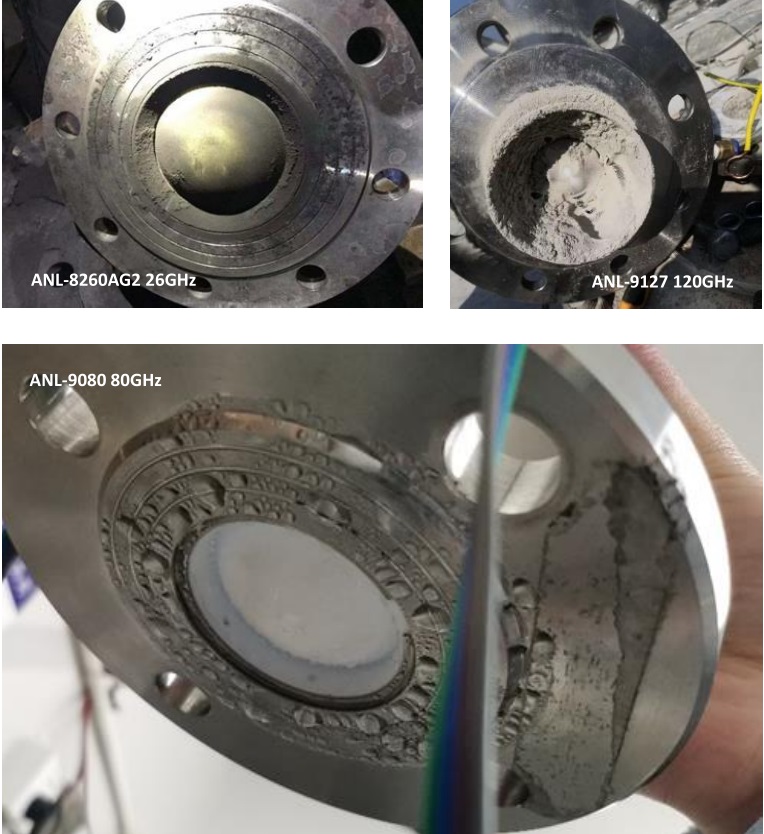
■ Steam, dust and foam
Lower frequencies such as 26GHz are not adversely affected by high levels of dust or steam. These frequencies have been very successful in applications ranging from cement, fly ash and blast furnace levels to steam boiler level measurement.
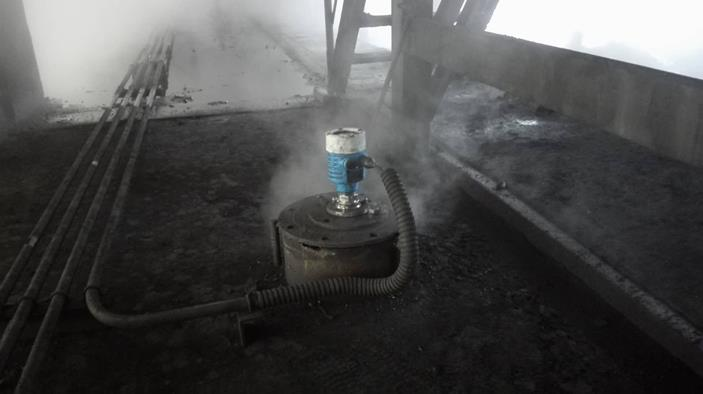
ANL-8260AG2 26GHz pulse radar
In steamy and dusty environments, higher frequency radar will suffer from increased signal attenuation.
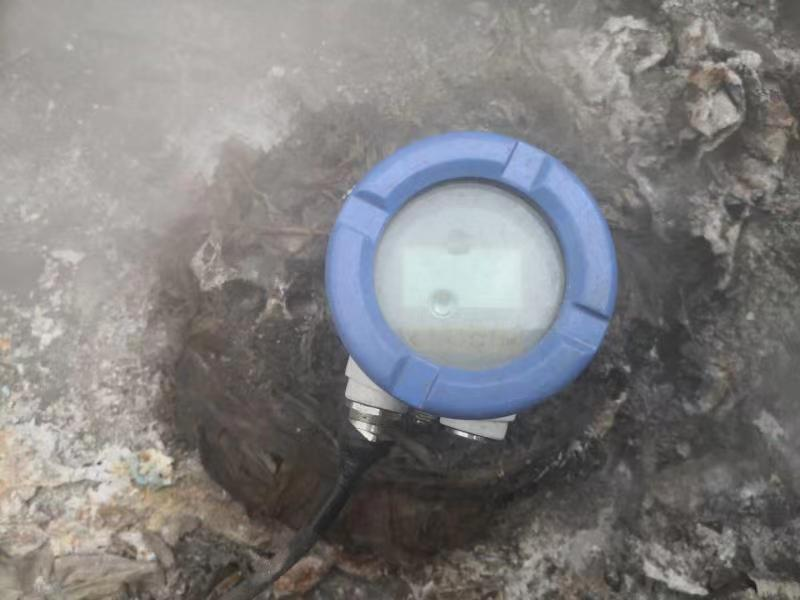
ANL-9127 with 80mm lens / 120GHz
Note: Normally, for a radar of higher emitting frequency, using a larger lens antenna has an advantage in this area no matter what the steam.
■ Foam
The effect of foam on radar signals is a grey area. It depends a great deal on the type of foam including the foam density, dielectric constant and conductivity. However, low frequencies such as 26GHz cope with low density foam better than higher frequencies such as 80GHz. For example, an 80GHz radar signal will be totally attenuated by a very thin detergent foam on a water surface. A 26GHz radar signal will see through this type of foam and continue to see the liquid surface as the foam thickness increases to 150 mm or even 250 mm.
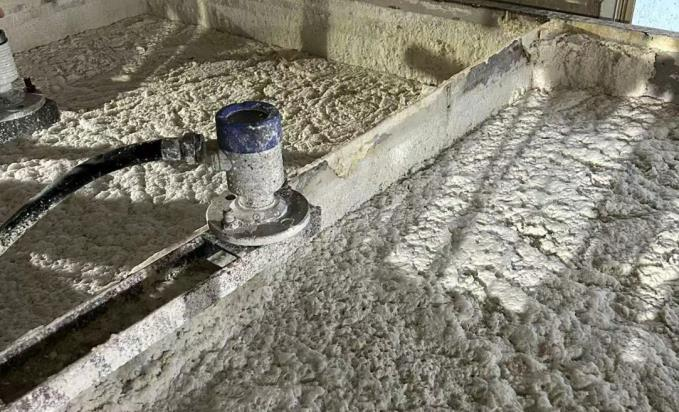
ANL-9080 with 50mm lens
Note: For such thick foam measurement applications, an 80 GHz radar with a small lens (50 mm) is not an optimal product choice, which often leads to instability and level jumps. It is recommended to use an 80 GHz radar with a lens antenna at least 80 mm in diameter, which has advantages in this regard.
The thickness of foam will cause a small measurement error because the microwaves slow down slightly as they pass through the foam. When foam is present, it is important to ask us with as much information as possible on the application.
■ Minimum distance
Higher frequency radars have a reduced minimum distance (near blind) when compared with the lower frequencies. When measuring in small containers and still tubes, 80GHz/120 GHz may be a preferred choice.
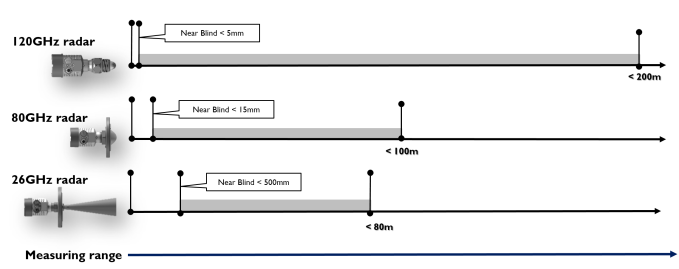
■ Summary of the effects of radar frequency
1. Better focusing at higher emitting frequency means higher antenna gain (directivity), less false echoes and reduced antenna size.
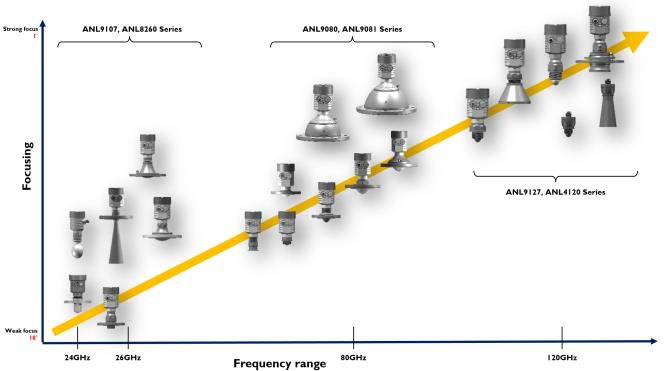
2. Reduced signal strength caused by signal damping (Signal fluttering) at higher emitting frequency caused by condensation, build-up and steam and dust.
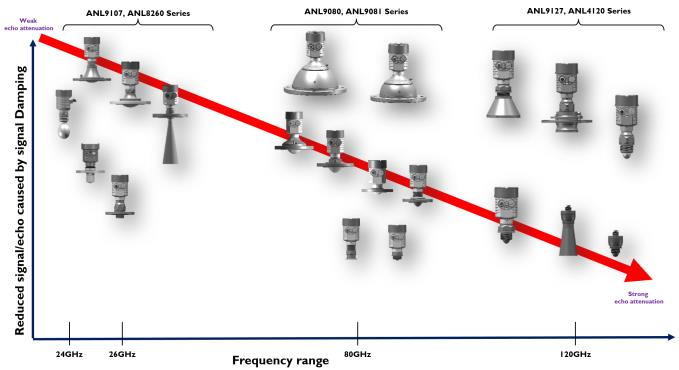
3. Higher damping caused by agitated medium surface (wave movement, material cones with solids, signal scattered).
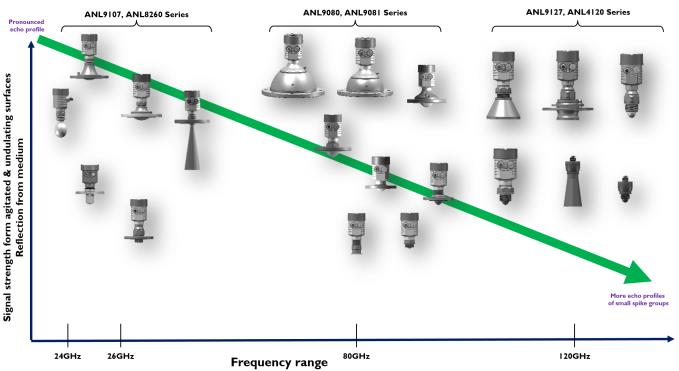
References
‘To suggest that any one type of level transmitter technology could be regarded as 'universal' would be unrealistic and potentially irresponsible due to the variation and complexity of available applications when liquids, powders and solids are all considered. However, the rate at which radar based level transmitters have established themselves over the last couple of years would tend to suggest that this technology is closer to that definition that any principle has ever been.’ --- By Mel Henry
